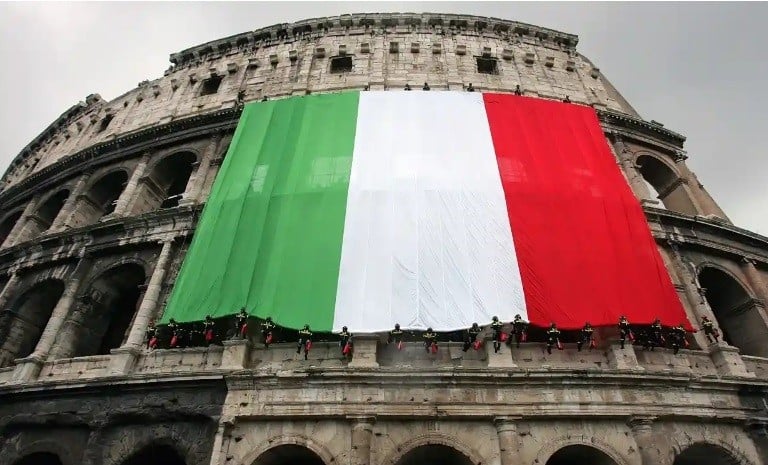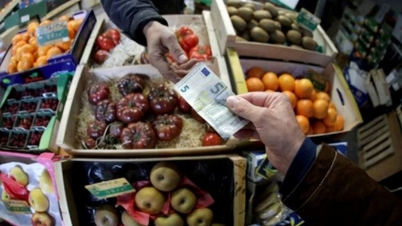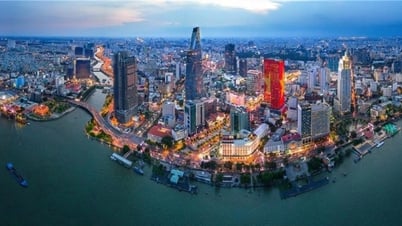During his 190-minute press conference in early 2024, Italian Prime Minister Giorgia Meloni did not mention a single number. As the leader of an economy worth 2,000 billion euros ($2,186 billion) and exporting 600 billion euros, Prime Minister Meloni’s silence is a question mark that needs an explanation.
 |
| Italian Prime Minister Giorgia Meloni at a press conference in early 2024, January 4 in Rome. (Source: AP) |
Faded
First of all, let’s start with the figures that Prime Minister Meloni failed to cite. In fact, she did not mention the clear decline of the Italian economy, from being an advanced country to a middle-income country and increasingly invisible on the global economic map. This is happening despite the thousands of dynamic businesses and millions of talented professionals operating in Italy.
Ms Meloni cannot say that the share of the Italian economy in the current European Union (EU) has decreased by 26% in the period 1995-2023 (from 17.2% to 12.7%). During the same period, the share of the Italian economy in the Eurozone economy has also decreased from around 20% 30 years ago to 15% today.
Some economists might argue that this decline in share is due to the growth of the new economies in Central and Eastern Europe. But that argument is not convincing when comparing Italy with France: the French share of the Eurozone has hardly changed since 1995, while the Italian share has declined and actually lost its position significantly (according to the European Commission database).
Furthermore, Prime Minister Meloni cannot say that the comparison within Europe is too harsh for Italy. For example, if the entire EU, consisting of 27 member states, is compared to the United States, the bloc is also losing ground. In dollar terms, in 1996, the EU and the United States had a GDP of about $8 trillion.
However, despite strong growth in emerging countries in Central and Eastern Europe, the US economy in 2022 was 52% larger than the EU's, a gap of nearly $10 trillion that may have widened further in 2023.
When globalization began in 1980, per capita GDP in the United States was equivalent to the average of the 27 EU countries (although incomes in the Eastern Bloc member states were still low).
By 2022, the average income per capita in the US will reach $76,300, while the average income in the EU will only reach $37,400, less than half of the US, despite the very strong recovery of Eastern European member states such as Estonia and Slovenia. This difference has increased especially since the global economic crisis in 2008, the first major disruption in 30 years of globalization (according to data from the World Bank).
In essence, Italy is losing ground in an economic region that is itself rapidly shrinking relative to the world’s production and technology levels. Italy is falling behind a group of countries that are already slowing down. The result is a significant slowdown in the region’s growth relative to the global trend.
In 1992, per capita income in the United States was only 9% higher than in Italy in current dollar terms. By 2022, it was more than double that in Italy ($76,000 versus $34,000). It may be wrong to state that difference in current dollar terms, given the exchange rate and purchasing power fluctuations, but if this depreciation is taken into account, it still doesn’t make much of a difference.
And the future is vague
Also in the press conference in early 2024, Ms. Meloni had other numbers that she certainly did not want to talk about. For example, the numbers show how closed the Italian economy is to the world. Compared to the current size of the economy, from 2005 to 2022, Italy should have received a total of 120 billion USD in foreign direct investment (FDI) when considering the economic proportion equivalent to France; at the same time, there would have been an additional 600 billion Euros if Italy had foreign investment equal to the EU average since 2005 (always considered as a proportion of total output).
For FDI, Italy has only achieved a cumulative value of 27% of GDP since 2005, much lower than France's 40%, Germany's 48%, and Spain's nearly 60%.
Italy’s production links with the rest of the world are less developed than those of advanced economies. It imports less capital, knowledge, skills, and technological processes and innovates less. Italy is less present in complex production chains and organizations outside its borders.
All this has limited Italy’s capabilities. Despite many individual cases to the contrary, as a country, Italy is clearly shrinking (according to data from the Organisation for Economic Co-operation and Development - OECD).
 |
| Italy is losing ground in an economic region that is itself rapidly losing ground relative to the world’s manufacturing and technological capabilities. (Source: Reuters) |
On the other hand, analysis by the Confindustria Research Center also shows that FDI trends in 2023, which recorded more positive results in the US, have slowed down in Italy and Europe compared to 2022.
It would be too much to expect Prime Minister Meloni to address these issues in her recent press conference. A government leader’s press conference is not a news bulletin or a conference. However, one might expect a clearer stance on this important issue for the country from a young, articulate female prime minister who is interested in what is happening in the world and runs a government that is likely to last.
(according to Corriere della Sera)
Source




![[Photo] General Secretary To Lam visits exhibition of achievements in private economic development](https://vphoto.vietnam.vn/thumb/1200x675/vietnam/resource/IMAGE/2025/5/18/1809dc545f214a86911fe2d2d0fde2e8)


![[Photo] National conference to disseminate and implement Resolution No. 66-NQ/TW and Resolution No. 68-NQ/TW of the Politburo](https://vphoto.vietnam.vn/thumb/1200x675/vietnam/resource/IMAGE/2025/5/18/adf666b9303a4213998b395b05234b6a)


























































































Comment (0)